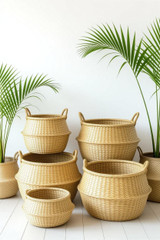How to Choose the Perfect Rug for Your Home and office
"Persian Rug Buying Guide: How to Choose the Perfect Rug for Your Home"
When it comes to purchasing a Persian rug, there are many things to consider. Persian rugs are known for their intricate designs, high-quality materials, and craftsmanship. However, there are also many counterfeit rugs on the market, making it important to know how to distinguish between authentic and fake Persian rugs.
In this guide, we will cover everything you need to know about buying Persian rugs, including the history of Persian rugs, the different types of Persian rugs, how to identify an authentic Persian rug, and where to buy one.
History of Persian Rugs
Persian rugs have a long and rich history dating back over 2,500 years. They were originally made by nomadic tribes in Iran, who used wool from their own sheep to create the rugs. Over time, Persian rugs became more elaborate, incorporating intricate designs and high-quality materials like silk and cotton.
During the Safavid dynasty (1501-1736), Persian rugs reached their peak in terms of quality and craftsmanship. They were used to decorate palaces and mosques, and were considered a symbol of luxury and status. Today, Persian rugs are still highly prized for their beauty and quality, and are considered a valuable investment.
Types of Persian Rugs
There are many different types of Persian rugs, each with its own unique style and characteristics. Here are some of the most common types:
- Tabriz Rugs: These rugs are made in the city of Tabriz in northwestern Iran, and are known for their intricate designs and high-quality wool.
- Kashan Rugs: Kashan rugs are made in the city of Kashan in central Iran, and are known for their intricate floral and arabesque designs.
- Isfahan Rugs: Isfahan rugs are made in the city of Isfahan in central Iran, and are known for their intricate designs and high-quality silk.
- Qom Rugs: Qom rugs are made in the city of Qom in central Iran, and are known for their fine weave and intricate designs.
- Nain Rugs: Nain rugs are made in the city of Nain in central Iran, and are known for their high-quality wool and intricate designs.
Identifying an Authentic Persian Rug
When shopping for a Persian rug, it is important to know how to identify an authentic rug from a fake one. Here are some tips to help you identify an authentic Persian rug:
- Look for handmade rugs: Authentic Persian rugs are always handmade, never machine-made. Look for imperfections and variations in the design, which are signs of a handmade rug.
- Check the knots: Persian rugs are made with two types of knots: the Turkish knot and the Persian knot. The Turkish knot is symmetrical, while the Persian knot is asymmetrical. Look closely at the knots to see if they are consistent and even.
- Check the materials: Persian rugs are made with high-quality wool, silk, and cotton. Check the materials to make sure they are of good quality and feel soft to the touch.
- Look for a signature: Many authentic Persian rugs are signed by the weaver or the workshop where they were made. Look for a signature on the back of the rug.
Where to Buy Persian Rugs
There are many places to buy Persian rugs, including online and in person. Here are some tips for where to buy a Persian rug:
- Visit a reputable dealer: Look for a dealer who specializes in Persian rugs and has a good reputation. Ask for references and check online reviews before making a purchase.
- Buy from a trusted source: If you are buying online, make sure to buy from a trusted source. Look for websites that offer a money-back guarantee and have a good reputation.
- Check the return policy
Recent Posts
-
Order the Best Boss Day Gifts for Male & Female Bosses in the UAE from Craftihouse.com
Every year, Boss’s Day is the perfect opportunity to show appreciation for the people who lead, ment …13th Oct 2025 -
How This Gift Came to Life: The Story Behind Our Palm Leaf Baskets
How This Gift Came to Life: The Story Behind Our Palm Leaf Baskets In a world where everything is be …8th Oct 2025 -
Handmade Leather Key Chains – Timeless Souvenirs & Everyday Companions
Handmade Leather Key Chains – Timeless Souvenirs & Everyday Companions Introduction In a world where …25th Sep 2025



